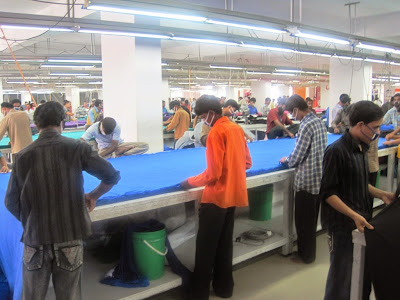
The T-shirts displayed in retail stores might be sourced from a different part of the world. If you shop a Crew Neck Tee from a shop in New York City, that piece might be sourced from one of the Asian countries. There are big factories (small as well) where these T-shirts are made. And sourced by brands or retailers. Did you ever tried to know how t-shirts are made?
In a garment factory, hundreds of T-shirts are made daily. A garment factory gets the order for making T-shirts from international buyers or brands. It performs a number of activities to make finished T-shirts. In this article, I will take you through the various processes a T-shirt factory follows up to shipping of T-shirts to its buyer.
Understanding buyer requirement
This is a very crucial stage to the supplier. Factory starts working on a design after receiving Techpack (design specification) with or without physical sample. Factory reviews T-shirt sample to understand the complete requirement of the buyer. A technical sheet normally includes the following points.
Reviewing T-shirt construction details –
Number of components are there in a T-shirt. Style analysis is done to check types of seams are used joining parts and make a finished T-shirt. Review a t-shirt sample, if there are decorative stitches, location of trims application. Need to know sewing threads quality like thickness, strength, and fibre composition etc. In production point of view what types of machines to use making the desired design.
Understanding raw materials requirement –
Factory makes a list of materials required for making the T-shirt. Normally a T-shirt is made with knitted fabrics and rib. In the techpack designer mentions fabric specification for the particular design. Information such as fabric weight, yarn count, construction, fabric colour, and kind of yarn processing etc are some of the fabric specifications. In a simple way, the factory should know quality and quantity requirement.
Production Process to be followed -
There are varieties of T-shirt design available. The factory needs to follow a specified process to make the desired final product. Factory maps process flow after analyzing the style. If processes to be followed are not clear then it would consume longer time and higher energy to complete the order.
Value-added process requirement -
Does the design have any printing or embroidery work? If the value-added process is there, finding the supplier where that process can be carried out.
T-shirt quality requirements -
stitch quality requirement like stitch per inch, allowance of measurement variation etc. Understanding fabric quality so that right fabrics are sourced for the order.
Finishing and packing instruction –
In the techpack or buyer quality manual, buyer mentions details of finishing, tagging, labelling and packing details. The factory needs to understand all of these.
Sourcing of raw materials
Other common materials required making a T-shirt includes sewing threads, transparent elastic tape, different types of label, logos, tags, packing materials etc. Everything is sourced in advance of production start.
To meet buyer’s requirement on fabric quality and giving them assurance that quality fabrics are used in making the T-shirt, factory submits test report on fabric properties (physical and chemical) prepared by nominated Testing Labs.
T-shirt Sampling
Factory needs to draft patterns for t-shirt samples and needs to modify and change to get correct fit. CAD system is used to make pattern. Later production pattern are developed after sample approval and grading is done for pattern in all sizes. This patterns are used in cutting fabrics and making garment as per required measurement.
Production Planning and scheduling
Cutting of Fabric Layers
 |
| Fabric layering on cutting table |
Stitching of T-shirts
Various types of production systems exist for making T-shirt. Most common production system for mass production is progressive bundle system and group production system. Sewing operators are paid fixed monthly salary or on piece rate based.
Garment Quality Control
Finishing of T-shirts
Thus t-shirt order is made and sent to the buyer’s warehouse. And finally T-shirts reaches to retail stores.
